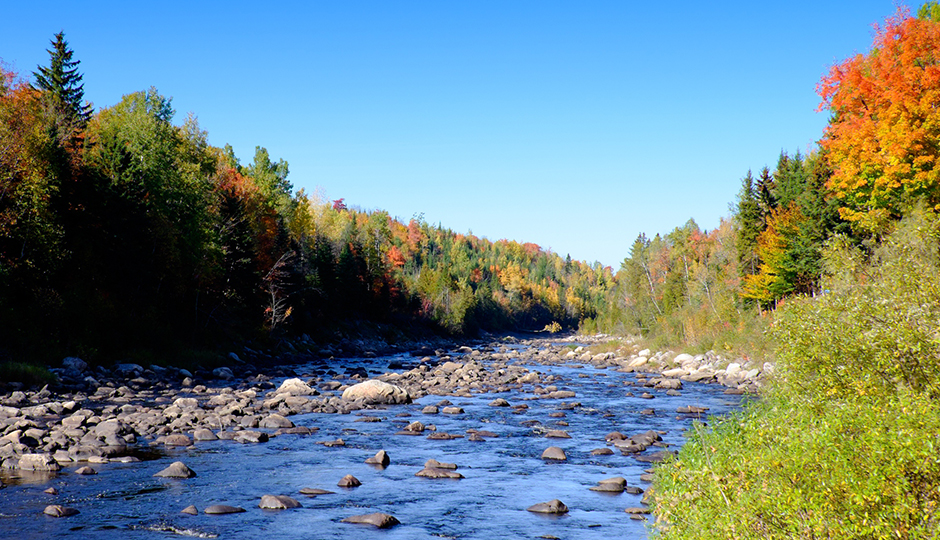Climate change and the development of Northern Québec—causing increased levels of CO2 emissions—will warm our rivers and disrupt their ecosystems. But which waterways and species are the most at risk?
Aquatic wildlife management and conservation officials could tailor their interventions to the specific ecosystem and human context.
It is hard to predict, because Québec and Canada do not have enough river water temperature data to allow for proper monitoring. Anik Daigle, a teacher and researcher in the Department of Physics at Cégep Garneau and a research associate at INRS, is seeking to remedy this lack by setting up a water temperature network for Québec's rivers.
Better knowledge of the thermal regime of watercourses would allow aquatic wildlife management and conservation officials to tailor their interventions to the specific ecosystem and human context. For example, fishing could be banned during warm periods and thermal refuges could be built for sensitive species.
It is clearly impossible to take measurements in all of Québec's 130,000 waterways! Anik Daigle is working on a mathematical interpolation model to determine water temperature without having to measure it directly. Her hypothesis states that two rivers of similar size that share the same geological, climatic and physiographical characteristics will have similar thermal regimes. The researcher has identified a set of reference rivers—with the widest possible range of characteristics—from which it will be possible to derive temperature data for other watercourses.
The scientist is currently validating her methodology in France and the United States, where there are well-established water temperature networks. Once this is done, it will be possible to instrument the reference rivers in order to monitor thermal variations—and their consequences—in all of Québec's watercourses.




